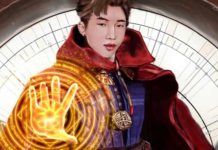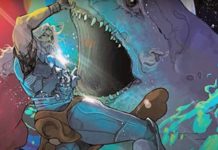Film Goblin chats with Daniel Gonzalez and Jeremy Lasky, the co-founders of Perception. They are a New York based VFX design studio that creates tech, gadgets, and amazing title sequences for the Marvel Cinematic Universe, they also do amazing UI and UX for global technology clients. Check out more at: http://www.experienceperception.com.
https://www.youtube.com/watch?v=W1qoqAZPOTk
Film Goblin: How did your company Perception come to be?
Danny: We met at a company called R/GA.
R/GA was the top visual FX studio in NYC back when I started in the mid 90s. In late 2000 they closed the studio doors and decided to take the company in a different direction, designing websites for high-end clients. I stuck around for a little and Jeremy left to be the creative director at another web company.
Jeremy and I kept in touch and in 2001 we both decided to start Perception. Since we had little money and desktop computers were getting so powerful we decided to use the desktop platform as our foundation. Final Cut was just released; After Effects had already been out.
We used high-end machines at R/GA that cost hundreds of thousands, we took our knowledge and creativity and reimagined what could be done on the desktop. We were probably the first “motion graphics” studio utilizing desktop machines and their true potential. That’s how it started.
The first thing we did was to make a client “hit list”, which we continue to make today.
Marvel was number one on that list back when we started. We were both huge Marvel fans, I loved Wolverine and Jeremy was a fanatic of Hulk. With Jeremy being from Brooklyn, and me being from Queens, we have this ‘don’t take NO for an answer’ type attitude. We weren’t waiting around for projects, we took action and hustled to get work.
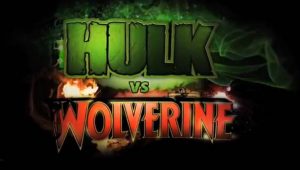
We just had to attack Marvel, and we did. We started talking to them when, believe it or not, Marvel was just an independent film studio located on top of a Mercedes dealership in Beverly Hills.
They saw the passion we had and gave us the opportunity to work on their animated DVD series, which they were doing a ton of. They asked us to build a title sequence for an animated feature. Crazy enough, the first Marvel project we got was Hulk vs Wolverine, our 2 favorite superheroes growing up. We were super excited!
Jeremy: Let me back up a little further. When the two of us were working at R/GA, the thing we loved working on most were film title sequences. This was in the mid-90s when film title design wasn’t such a fashionable thing as it is today. It was a little bit more of an obscure art form.
R/GA was one the few companies doing it. It was certainly a legendary place that had done hundreds of title sequences throughout the 70s, 80s, and 90s. They did the titles for the original Superman movie, The Untouchables, Aliens and many others.
When I got out of college, where I studied graphic design, it was my number one choice of companies to work for, because I always wanted to do film title work. The only other place doing great film title work for at that time was Saul Bass—I sent him my work and I got a lovely letter back from him, but obviously no job offer.
We met each other at R/GA. We got to work on few different film titles, but it was mainly commercial work.
Then when they decided to become more of this interactive agency, the two of us saw this opportunity to start this motion graphics studio, and as Danny said, one of the goals for Perception was to get into film titles. That was the whole reason I became a designer and became my passion.
We started Perception in 2001. Initially all the work was broadcast design for ad agencies. We did a ton of work for HBO. That was our big breakthrough client, which led to ESPN. At a certain point we had worked with every big broadcast agency. We were mainly television designers, but that film dream was still very much alive. The fire was still there.
It just so happens that the early 2000s was when the first Spider-Man came out. The first X-Men came out. It was the very early days of the superhero phenomena. Back then the two of us went to see those movies and thought “wouldn’t it be great to do film title sequences for Marvel films?”
We were always Marvel fan boys, never DC. So much so that every computer at Perception was named after a Marvel character. As Danny mentioned, his favorite character was Wolverine, so his computer was named after him. My computer was The Hulk. Six or Seven years later when we got to work on Hulk vs Wolverine, we saw as destiny.
Ang Lee’s Hulk was being produced around 2002, and we were trying to get involved with that. We had a connection with Ang Lee’s producers, and we started sending all kinds of Hulk swag to them, including collectables I had as a kid, like Pez dispensers, a Hulk boogie board, all kind of crazy stuff to get their attention.
It didn’t really lead us very far, but when we went to Marvel in Beverly Hills, when they were prepping the first two films in their studio’s history, the first Iron Man, and Louis Leterrier’s Incredible Hulk, with Ed Norton. That is when we start to talk with them about the ideas we had for the Iron Man and Hulk title sequences.
It was a long shot, but we showed up with such fire and passion that they actually met with us. We had a really good conversation. We gave a good presentation, and they remembered us enough that we were introduced to the team producing feature-length animated DVDs. After a while we got an opportunity to show them ideas for a title sequence for one of these DVD’s. Eventually, we had our big break through, Iron Man 2.
Jeremy: Back then Marvel was small enough and it was in its infancy so we were able to get an introduction. My persistence and tenacity, coupled with my passion for Marvel wouldn’t take no for an answer! Today, I am sure it’s virtually impenetrable to unknown and untested teams. Our timing was very, very lucky.
Danny: Now, you would have to go through everyone’s agents. Back then it was a bit more intimate and we were at the right place at the right time. They didn’t really know where it was going to lead at the time but part of me was sure they had a vision in place for Marvel’s future.
So here we are, a couple guys from New York, and we sit down to have a meeting with some people we didn’t know, and they turned out to be Kevin Feige , Victoria Alonso, Louis D’Esposito, Jeremy Latcham, and bunch of other folks that are now pretty powerful in Hollywood.
One thing I will say about them, is that they are a very loyal group. They call us now to work on the films because they know we have the deep passion for the MCU . We have the Marvel Universe encyclopedia inside our brains. So when they talk to us about the characters, they don’t have to explain a thing, we know everything about them already. That’s a huge bonus.
FG: When you were talking to Marvel back when the first two films (Iron Man and Incredible Hulk) were being made, did they tell you then about this grand vision of a cinematic universe?
Jeremy: They obviously wanted to make more films but it was a huge risk. At that time they didn’t know how any of this would work out. Today I can’t imagine anyone else but Robert Downey Jr. playing Tony Stark, but back then it was a huge risk to cast him. Jon Favreau hadn’t done any effects filled block buster. He had directed Zathura, but still, they didn’t know how it would all work out. Obviously it was a huge payoff, but no one could have predicted it back then.
You look back now and it all makes sense. It all lines up. Everything seems to follow an inevitable path. You just have to tip your hat to the brilliant vision and genius of Kevin Feige and all the executives at Marvel for having a plan and the vision to carry this forward.
FG: So you guys officially started working on the MCU during Iron Man 2?
Danny: Correct. The first thing they gave us was the video wall at the Stark Expo . It was behind Tony Stark as he landed on stage and introduced his father Howard.
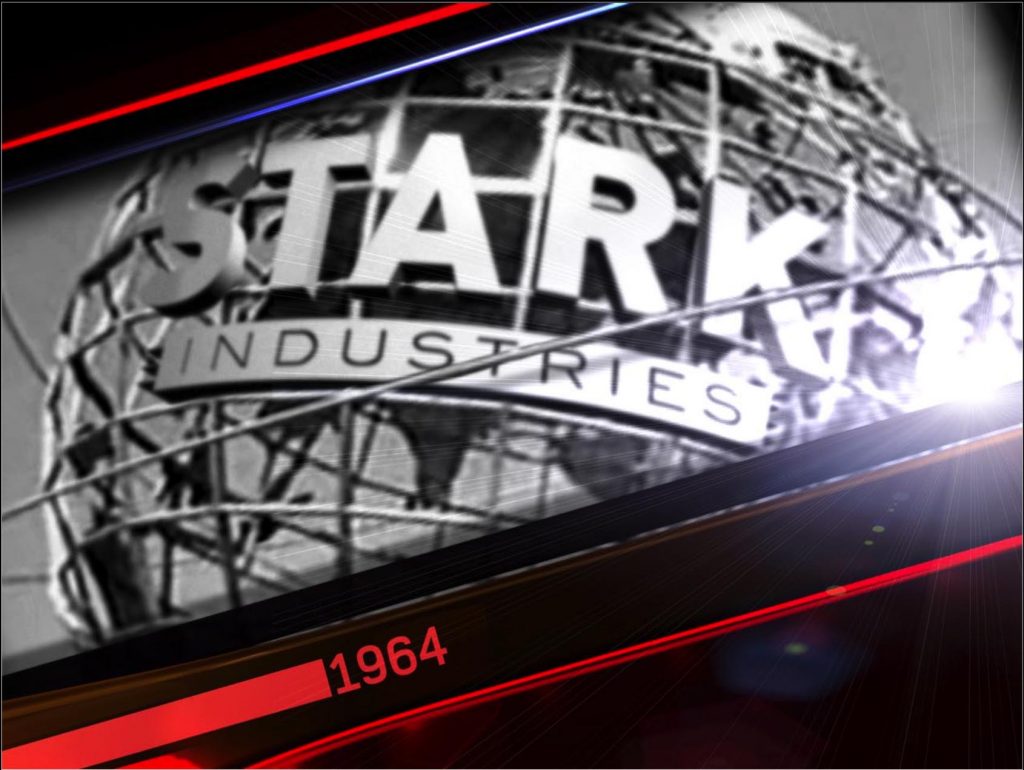
They gave that because we had done a lot of broadcast work, and this was similar type work. They wanted to give us something because we had always been pitching them ideas, and they loved our work.
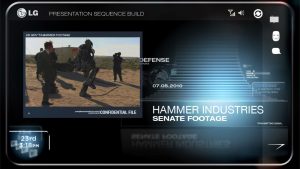
So they gave us that to work on. We worked closely with Jon Favreau. One of the ideas we pitched was for Stark’s smart phone . It was techy-looking and good way of introducing what the tech from this mad genius would look like. He loved that. We put that in the back of head during our call. So we came up with other ideas.
We delivered the video wall. He loved it. It worked fine, but being the New Yorkers we are (Never Quit Attitude!), we really wanted to show how that phone would actually work.
So over the weekend we did a live action shoot. We designed and animated what we thought the phone should look like. We sent that off to Favreau and the Marvel executives.
Then we didn’t hear from them for months. We thought: “Damn it, Our New York attitude killed it now, and we are never going to work with them again!”
Low and behold, they finally get back to us. They said the love the test and they asked us if we would like to come up with more ideas for the phone.
Jeremy: It took a while. It didn’t happen over night. They made us sweat it out.
Danny: We did some more concepts, and they loved them. Once they saw our thinking and logic behind the technology of Stark, it just snowballed from there. We ended up doing the smart mirror, the smart table, and all the smart TVs in his home.

Jeremy: It was the whole Stark ecosystem and interface and how we could take all these different pieces and make it feel like cohesive whole.
One thing I just want to go back to is our love and passion for Marvel. That was something that was very much a part of our initial conversations with them. Perception is a team of the biggest Marvel fans on the planet. We have Marvel posters everywhere. We both collected comic books from the time we were old enough to read.
It was that drive and desire that really came across in our first meeting with them. Danny told me I was glowing with gamma-rays after the first meeting with Favreau and team. We just wanted so badly to be a part of this world. Again, no one knew it was going to be a $15 billion dollar and climbing universe. It was just the opportunity to get involved with our favorite characters that excited us.
It was dream for a Marvel fanboy who grew up watching the cheesy Tim Burton Batman movies and the Superman movies. I loved the first two Superman movies, but 3 and 4 were a disaster.
Every kid that read Marvel comics in the 80s wondered: “What if they became films?” We would daydream about what actors would play which characters.
There were rumors when I was a teenager that they were making Iron-Man with Tom Cruise. James Cameron was making Spider-Man, but nothing ever came to fruition. It was always disappointing for Marvel fans. That was until the Sam Raimi Spider-Man films, which were the first really brilliantly well done depiction of these characters. The first couple of X-men films were not my favorites, but I love Hugh Jackman as Wolverine.
All that stuff was firing us up. And then we heard they were going to make Iron-Man. That was just the next level. We had to get involved.

Danny: Today when we work with the executives, they let us loose. They know we understand the characters, and we are not going to take it too far, and they have a trust and confidence in us knowing we never disappoint. They are very loyal, if you do good work.
For example, with Black Panther, they told us we need ideas for Wakanda’s next level technology, which is better than Tony Stark’s. Well we shouldn’t say “better”. It’s a different type. The most advanced in the MCU.
We came up with bunch of concepts. We can’t get too deep into them because we aren’t allowed to just yet.
That was very different from when we did Thor: The Dark World . We did the interfaces for his girlfriend. They were more like something you would see built from Radio Shack parts.
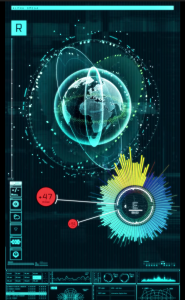
There is an interesting pecking order. In the past was Stark Tech on top, and then everything else waterfalled down from there. Now it’s Wakanda. You also have SHIELD that is bit influenced by Stark but more tactical. Then you have Jane Foster’s tech, and so on.
Jeremy: It is pretty amazing to have Marvel collaborating with us. They all have such great ideas. They are also incredibly detailed oriented, to the likes of which we had never experienced before with any other clients. They put every single thing under the microscope. Everything created has to have reason and logic behind it, and it has to match the story and the characterization.
It helps explains, in my opinion, some of the success of Marvel films. There is so much detail put into every part of these films.
For example, they put together the Wakanda bible, a 500+ page book of customs, rituals, history, and culture about this fictional civilization. It is so well thought out that it becomes the foundation of the movie. The movie almost had to do well because it was so well-planned.
FG: Do they always give that much information and guidance before you start working on a film for them?
Jeremy: It depends on what the project is and what the scope is. There have situations were they don’t give us any clue what they want. Like for some of the title sequences for instance. We just come up with what we think will make sense, and we give them a range of ideas to choose from.
Then there have been situations where they do have a very clear idea of what that want. They will give us some direction, like a music video, or a kids show. For Spider-Man: Homecoming they showed us some Claymation stuff they liked. That one was a little more driven by an approach they had in their heads. So there is really is a wide range with them.
For the FX work, it is all story and character driven. We want to make sure everything we do for their tech matches the level of sophistication for the character it’s created for. It also has to push the story ahead.
FG: So which MCU movie would say you spent the most man-hours working on?
Jeremy: That’s a hard question.
Danny: There were a lot of late nights on Iron Man 2 , because we actually did all the compositing on the shots. There were over 125 shots. That one was pretty epic for a small company started by two guys from NY.
Jeremy: Some films we do a tremendous amount and other films we do some creative consulting on a particular scene or technological puzzle that needs solving. For Iron Man 3 we came up with the whole concept for what Killian would show Pepper Potts regarding how Extremis works on the brain. However we didn’t do the composite work for the final FX shots.
Danny: So I would say the most hours were spent on Iron Man 2 and Black Panther.
Jeremy: Thor: Ragnarok was pretty intense, too.
FG: So for Thor: Ragnarok did you design the alien tech?
Danny: Yes. We did the user interfaces on all the different spaceships. That was fun because it was very colorful. All the inspiration was from Jack Kirby’s art. You could see Kirbys influence throughout the film.
So I’d say the films we worked the most on were Iron Man 2, Thor: Ragnarok, and Black Panther.
Jeremy: With Black Panther, we had the advantage of being involved with it before they even started shooting the movie. It was an 18 month journey we got to take with Marvel.


